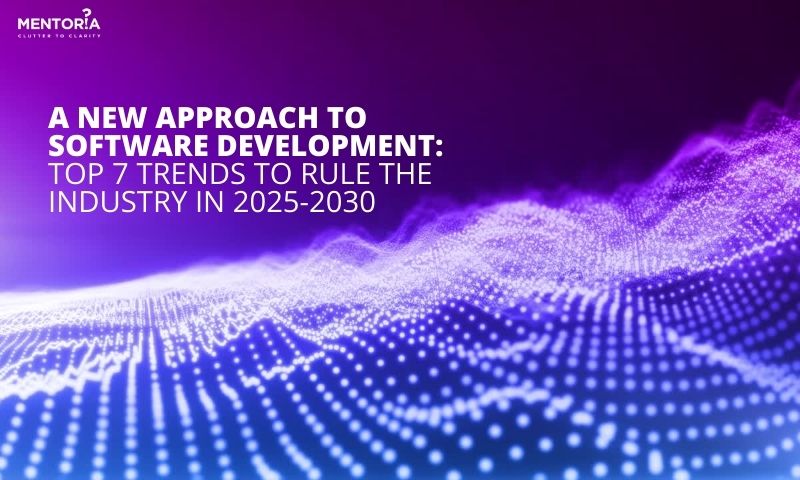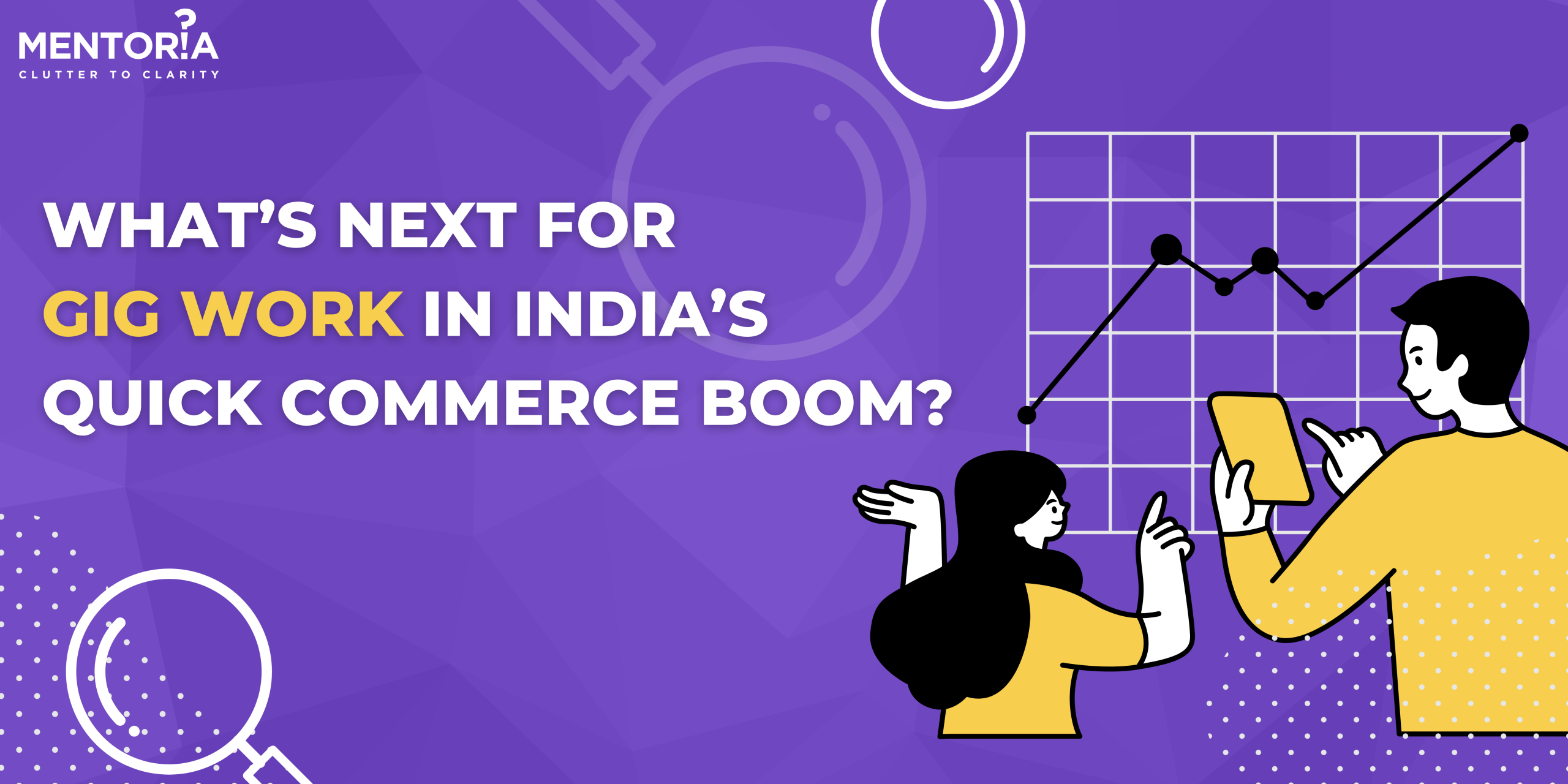A New Approach to Software Development: Top 7 Trends to Rule the Industry In 2025-2030

At the speed with which technology is progressing, machines will replace humans. Is it so? Don’t worry, technology will see a paradigm shift in the next five to ten years, but not since the intervention of humans.
Artificial intelligence is playing a dominant role in different sectors, and software development is following suit. ChatGPT is an ideal example of how the whole dynamic has changed.
The amount of innovation that has happened in the last few years is remarkable. But today, we’ll talk about the trends that will rule the industry in 2025–2030, so continue reading!
Top 7 Trends to Rule the Industry in 2025-2030
Progressive Web Applications (PWAs)
Often, users don’t want to download an app because of space constraints. Progressive Web Apps offer alternative solutions to native web applications.
Compared to native applications, PWAs take up only 3% of the space on Android devices. Besides push notifications, they load quickly, thus saving time.
In addition, they are connectivity-independent and feature app-like interactions. Apart from providing a secure connection, you can store them on the phone’s home screen.
From a developer’s perspective, PWAs offer an economical solution as they are cost-effective and timesaving. Also, the developer has to build only a single-version app – displayed across all the platforms.
Progressive Web Applications (PWA) fall under modern tech development and will play a significant role in shaping the future. Ideally, platforms like Google and Microsoft are now supporting PWAs, and we can expect more updates in the technology.
Blockchain
Blockchain keeps a digitised record of transactions. Plus, the technology helps maintain transaction records with cryptocurrencies like Bitcoin and other apps.
According to a report by Gartner, blockchain technology will grow by $176 billion in 2025 and 3.1 trillion dollars by 2030. With these predictions, blockchain will surely bring about a big revolution in the coming years. With blockchain, governments can start implementing distributed ledger technology, replacing the traditional paper-based system.
Moreover, technology can play an ideal role in the way we vote. If used in voting, the process can be secure and safe. The best part is that it can prevent forgery and make the voting process transparent. Beyond this, blockchain can be a game changer in the finance sector. Banking with blockchain technology can offer complete transparency, security, and efficiency.
One can say that blockchain is the most secure way of authenticating and protecting data, and it can revolutionise various business aspects. When facilitating trusted and verified transactions, this technology stands out like no other.
API-First Approach
With the API-first approach, the development part comes before implementation. Simply put, the developer creates the interface before the app. After the API, the developer or team will rely on the built-in interface. Instead of starting with the code, you can start with the design.
The API-first approach has gained traction in the last few years. Rightly so, it involves developing a reusable and consistent API to treat the users.
The best part about the API is that the development team can work in parallel without wasting time. Working on multiple APIs at the same time can increase productivity to a great extent.
API’s first approach can help improve the overall development experience. By defining the API, you can prioritise the developer experience, as availability from the outset can boost the speed of innovation. Moreover, it reduces the risk of failure to provide continuous performance.
Still better, it can optimise the development costs as the code is reusable. Most brands worldwide are now shifting to API-first technology.
Cloud and Edge Computing
Cloud technology has become a multi-billion-dollar market today. It is estimated to become an $860 billion market by 2025. Cloud technology integrates with other tech trends, giving it an edge over other technologies.
You can integrate cloud technology with machine learning, artificial intelligence, disaster recovery, automation, etc. Moreover, cloud computing can increase your business efficiency as it provides the required services over the Internet.
Storage, software, databases, and networks are all part of cloud computing technology. In the best case, it helps to scale up applications, which increases efficiency. Plus, you can save on the costs of adding resources through the cloud.
Edge computing is a trend in cloud computing and could be the next big thing in the upcoming years.
The technology works by processing the data in the local system, thus avoiding risks related to the cloud.
In addition, it helps to decrease downtime and improve safety. Unlike cloud services, it is more cost-effective and valuable for startups.
Cybersecurity
By 2025, almost 50–60% of companies will use cybersecurity. The key trends that will dominate cybersecurity technology will be automation, response capability, supply chain risk, and zero trust principles.
As the demand for cybersecurity experts grows, it is time for companies to accept that it won’t be remedied in the coming years. However, as automation increases, there will be a lesser burden on cybersecurity experts.
Here, sero trust is a principle, not security control. It relies on the tech infrastructure designed to check and then recheck the security issues of each entity and monitor all their activities.
Companies should be prepared with response capabilities, which means security experts working closely with incident responders. In addition, companies should recognise and acknowledge the risks of supply chains. For this, the security strategy needs to be improved.
The ability to mitigate cybersecurity threats will play a significant role in the coming decade. With increased cyberattacks, this technology is here to stay.
Deep Learning
As artificial intelligence dominates the tech space, deep learning has picked up. It teaches artificial intelligence to identify inputs like speech or faces. Besides, it teaches AI to predict the future based on records.
Deep learning and artificial intelligence create simple algorithms to screen the data before teaching the AI to learn its patterns. Digital helpers, voice-activated remotes, and automatic facial recognition are some examples that use deep learning.
Also, it is part of virtual reality and self-driven cars. Data science works on deep learning computer models to do tasks based on algorithms and specific processes. By 2025, deep learning is predicted to have a global market of billions of dollars, which indicates that deep learning will see widespread adoption in the next five years.
The best way to choose deep learning software for your business is by defining your requirements. Plus, you need to evaluate the performance and scalability of the software.
Microservices Architecture
Microservices architecture works on a new approach, helping with software development. Unlike monolithic architecture, which involves processes coupled as a single service, the microservice approach is different.
The architecture features different modules built as independent services. Plus, these modules support specific goals and use APIs to communicate with other service sets.
The best part is that the modules can be built or changed without altering other modules. Due to this, the technology requires less time, and its scalability is simple. Reusing it in other projects is easy, and IT teams can save their efforts on creating an app.
If something goes wrong in the monolithic architecture, developers need to troubleshoot and test the entire software. In microservices, the fault is auto-isolated and redeployed within a single service.
Docker is the most popular tool developers use for microservices architecture. Docker works on container technology, which is flexible and simple to deploy.
Wrapping Up
With this, we wrap up the top 7 trends that will dominate the tech space in the coming years. Tech innovations keep changing with time, and there is no guarantee a particular tech trend will be sustained over time.
But the trends we’ve listed above will emerge as strong ones in 2025–2030. However, one technology will dominate the future, and that is integration with Artificial Intelligence.
So if you’d like to stay updated with recent trends in the industry and explore career options from a wide range of fields, don’t forget to explore our knowledge gateway!









